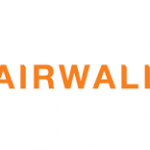Robotics investors still looking for the next big thing
![robots]](https://www.onestopbrokers.com/wp-content/uploads/2016/01/robots-620x320.jpg)
For the past five years, investments in robotics companies have grown, thanks to venture capital interest in robotics and automation, helped in part by Amazon’s purchase of Kiva Systems in 2012. But with no other large outcomes like Kiva, robotics investors may start to lose patience with companies, said Julian Counihan, a partner at Schematic Ventures.
“If there is not a significant outcome in the next few years, we may see a slowdown in investment,” said Counihan. “The average venture capital exit takes between five and seven years. Robot startups have received a ton of money since the Kiva acquisition, so if we don’t see a successful robot exit soon, there may be questions about the viability of investing in this space.”
Counihan will speak about investments in the robotics and automation space as part of a panel at RoboBusiness, to be held Sept. 25-27, 2018, in Santa Clara, Calif. (Robotics Business Review produces RoboBusiness.)
The panel, “Follow the Money: Where are Robotics and AI Investors Placing Their Bets?” will be held on Sept. 26, at 2:15 p.m. Scheduled to appear with Counihan on the panel include Dr. Eric Daimler, an adviser at Conversion Capital; Hamid Montazeri, VP of software engineering and autonomous robotics at Stanley Black and Decker; Sam Hoff, CEO of Patti Engineering; and Valery Komissarova, founder of Make Hardware.
Robotics investors moving beyond traditional markets
While investors now have heightened expectations, Counihan said he doesn’t expect to see venture capital leaving the space anytime soon.
“Venture capital interest in robotics is still on the rise,” he said. “Large funds have been created for the primary purpose of investing in industrial hardware, automation and robotics.”
Recently Counihan has noticed robotics companies moving beyond the traditional manufacturing and supply chain sectors into the construction, agriculture, and commercial food industries.
“Roboticists are branching out from the traditional verticals of supply chain and manufacturing,” he said. “They’re looking at other industries where there are still unsolved dirty, dangerous, or dull tasks that can be automated with the same intelligent perception technology proven successful in factories & distribution centers.”
This expansion is also a reaction to the oversaturation of robots within those traditional markets, Counihan added. Robot startups right now are facing a choice: remain in supply chain or manufacturing with clear-cut applications but higher capital and competition pressure, or explore new verticals with more difficult automation challenges but little to no capital or competition. It’s a sprint to find that next undiscovered application that can be effectively automated, he said.
However, in these new markets, the problems are proving more difficult to solve. “It’s easier to build something that will move an object in a constrained environment than it is to assemble a salad collaboratively in the same environment as people,” Counihan said.
Challenges for robotics startups
“The dynamics of the robotics market leads to unique challenges for startups. Much like in the early days of personal computers, the software is mostly machine-specific,” Counihan said. “With software, sensors, and mechanical elements, robot startups can be more capital intensive given the various areas of requisite technical expertise.”
This additional capital intensity can make it difficult for robot startups to scale. Fortunately for startups, robotics investors are enthusiastic about investing into the category and the threshold for traction is lower per round than it would be for a more mature technology.
Without an outcome that validates the commercial viability of these business models, Counihan said he believes that mood may not last for much longer.
In his work with startups, Counihan said he encourages robot companies to enforce self-discipline in two regards. First, it’s important not to get pulled in too many directions and to maintain product focus. With a wide range of customer applications, it can be tempting to stray from the core product.
“The difference between robotics software and enterprise software is that personal computers are mostly fungible,” Counihan said. “Whereas, robot platforms across industrial facilities can be widely different. It is up to the startup to turn down customers too far from the core product focus.”
For robotics companies to succeed, they will likely be more focused on software than physical components or parts, which have largely been solved by other companies.
“I encourage robot startups to focus on software,” Counihan said. “There’s a robust ecosystem of industrial manufacturers, service providers, and integrators who would be happy to partner with startups creating new revenue opportunities. Venture-backed startups are best served by sticking to high-margin products with scalable sales channels and avoiding lower margin hardware design, integration, and support services.”
For example, one of the robot startups Counihan has invested in is Plus One Robotics, which recently emerged from stealth mode. The company is adopting the strategy of focusing on 2D and 3D perception software while working with partners for the robot arm, end effectors, and systems integrators that work with distribution centers.
“Their partners are assisting with all elements of the business outside of software.” Counihan said, “So far, this strategy has proven successful. “
Source: Robotics Business Review – Robotics Investors Still Looking for the Next Big Thing





























